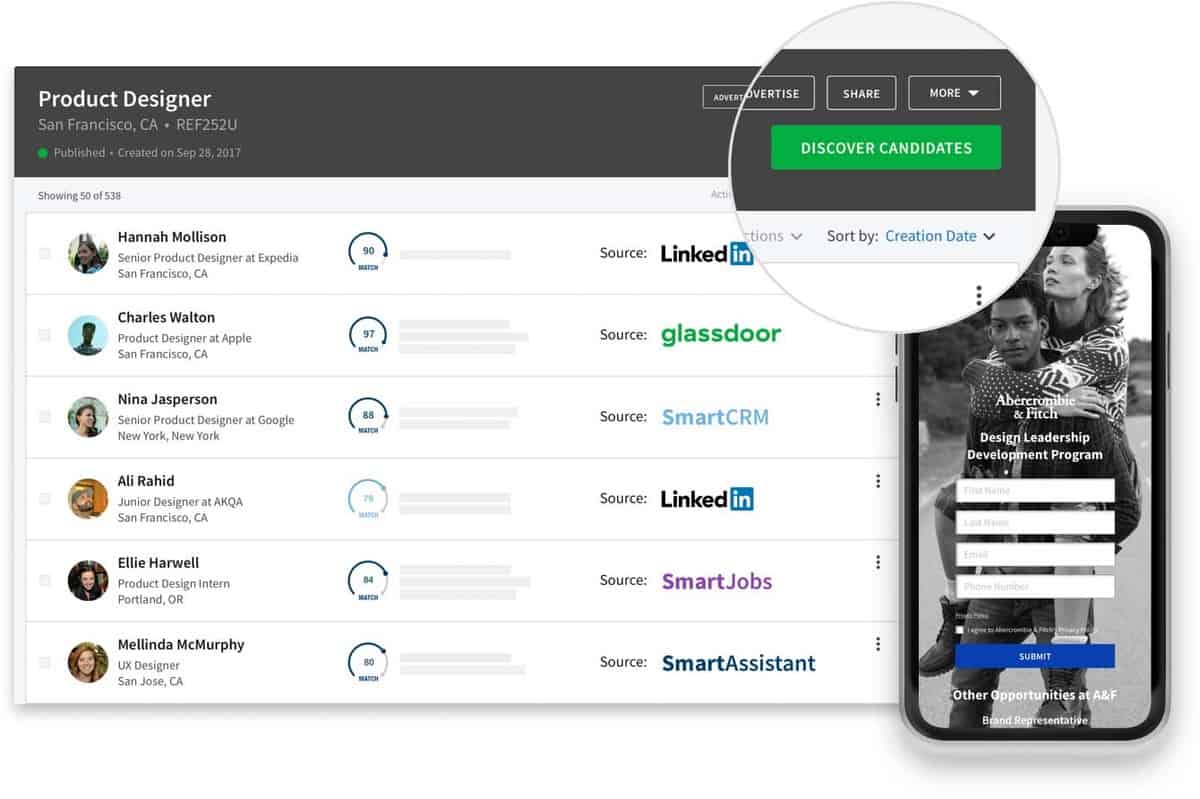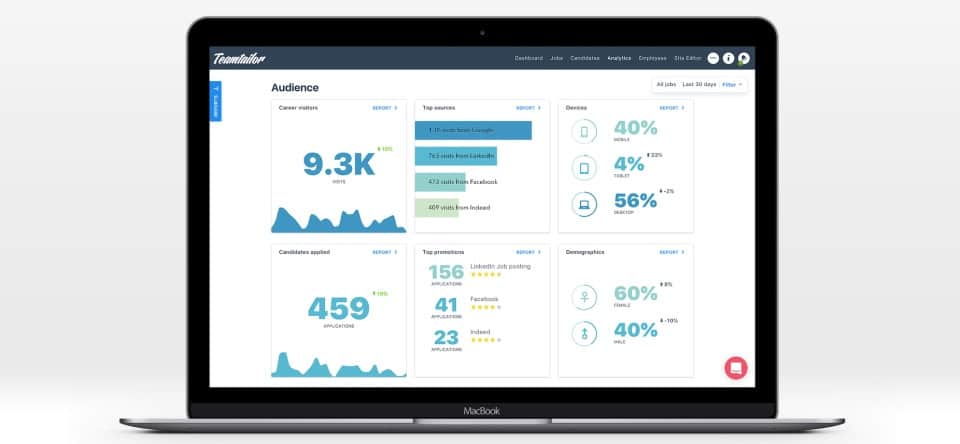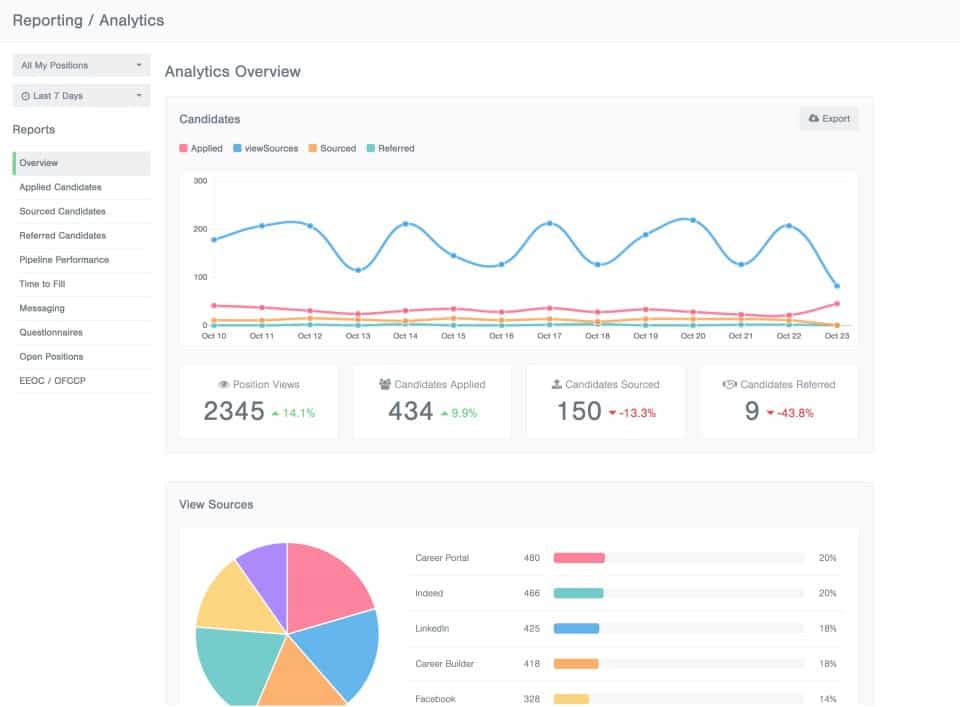
The battle for the best talent has already started. For this reason, companies have to adapt to new trends in recruitment continuously. The increasing importance of social media, which extends to almost all areas of our everyday life, is causing a change in the recruiting world.

The change in recruiting
While the recruiting process used to focus more on the company, today, the employee is moving more and more into the foreground and is becoming more critical. Applicants become courters, and companies do everything they can to attract the best.
The days of passive personnel selection are over at the same time. Businesses can no longer afford to wait for applications and hope that the right person for their business is among the batches of requests. On the contrary: you have to search actively.
The role of social media
How do you find the best employees today? Today’s methods for recruiting include:
- external job advertisements,
- your company website,
- Job fairs,
- Employee recommendations
- and, above all, the targeted use of social media.
What role does social media play in this context? A significant trend in recruiting is the so-called social recruiting. What exactly falls under this term, how best to implement social recruiting and what should be avoided, let’s take a look at the following.
What is social recruiting?
Social recruiting or social media recruiting includes all recruitment activities that take place via social media channels. It is one of the most critical recruiting trends in recent years. A distinction is made between direct and indirect social recruiting:
- Direct social recruiting describes measures in the area of ”active sourcing”, which means that candidates are addressed directly. Recruiters use the profile information and interests to decide whether the targeted person fits into the company or not.
- This contrasts with indirect social recruiting, which includes advertising measures. In this way, candidates who are not actively searching are made aware of the company or the vacancy.
Which method proves to be more efficient in terms of time, and the result depends entirely on the role you are looking for. “For commercial and other roles that are easier to fill, you can search indirectly to be very efficient. In the case of technical roles that are difficult to fill, companies have to address candidates directly because there is no indirect source for candidates,” explains Benjamin Osler, a recruiter at Gartner.
The currently most important and most widespread social recruiting channels are Xing, Facebook, LinkedIn, and Twitter.
Future perspective: Artificial intelligence in active sourcing
Artificial intelligence (AI) is particularly worth mentioning in connection with active sourcing. AI can help recruiters select suitable staff and establish the first contact between companies and potential candidates. In this case, the tedious letter of many connections is replaced by a chatbot.
It goes even further: AI can provide a pre-selection to candidates by filtering the CVs by specific keywords, but it can also make appointments with the candidates. If a contact from a social network is interested, for example, to learn more about the company and agrees to a job interview, the chatbot compares the calendar of the necessary recruiters and offers suitable appointments. This is a very time-saving and efficient way to make initial contacts with candidates on social media.
Opportunities and risks of social recruiting
Integrating social recruiting into company recruitment measures can prove to be extremely favorable due to the many advantages of social networks (such as the high reach).
A high social media presence gives recruiters access to a lot of information about potential employees. Since users aged 16-24 years spend an average of 3 hours a day on social networks, especially young talents, can be recruited. Also, job advertisements on social platforms are spreading much faster than with conventional forms of distribution: This includes sharing a job advertisement on your career website, which means that only active seekers are made aware of the open job offer.
The rapid spread and high reach can also hurt companies if the company’s contributions do not trigger the desired response. Assuming a company posts a post that generates negative comments and makes the rounds quickly, this can damage the reputation and drive out followers.
Dos and don’ts in social recruiting
So what do you have to look out for in social recruiting?
DOS
Use different platforms
Each platform has its audience, so use different channels for the respective target groups. Accordingly, you must also select the content that is appropriate for the target group and platform. Each network also has different functions that must be used correctly. Posts on Twitter, for example, should always have hashtags and briefly and concisely convey the message. In contrast, Facebook offers unlimited characters. So you can write more detailed texts, but also here you have to be careful that the most critical content is not lost.
Pay attention to your profile.
Create an attractive company profile and offer enough interesting information, for example, about the corporate culture.
Social recruiting is not just about writing to potential employees. There is much more to it than how to present your own company as attractively as possible.
Share enough pictures and videos of company events, for example. Videos are much better viewed and shared more often on average. Also, pay attention to an appealing headline to support your image and video material.
The content must look authentic and credible. Otherwise, the posts trigger a rather undesirable effect. One way to support credibility is to ask your employees to like or share the posts.
Be active and participate.
Become part of relevant social media groups, for example, on LinkedIn or Xing, and post your exciting contributions to attract potential candidates. You should be exactly where your target group is. This makes it easier to recruit new employees for your industry.
It is essential to interact with group members. It enables you to create a level of trust before contacting candidates. Posts can always trigger adverse reactions, so it is essential to draw a social media crisis plan beforehand.
Don’ts
Don’t annoy your candidates with spam
Do not send potential candidates irrelevant messages, but personalize message texts and match them to the respective candidate profile. Instead of writing that someone has an “interesting profile,” focus on the person’s specific skills or experience. This increases the response rate and gives the company the impression that it carefully selects its candidates and is interested in the person chosen.
Don’t post too much
Quality instead of quantity: only share informative, varied, and target group-specific articles. The company should act exclusively and professionally on candidates. The company page should only post relevant topics so as not to appear as a source of spam. Share useful information and tips for the target group, for example. And instead of merely posting something every day, they post less but valuable content.
Don’t do social recruiting on the side.
Continuity is essential for success, so you should distribute the content regularly and respond promptly to inquiries. Above all, you shouldn’t only be active when a position is to be filled! That gives the impression of a boring company. Social recruiting should be a long-term goal because building a community and developing relationships with potential candidates can be time-consuming. Contacts must be cultivated, so the company must always be present. It is also essential to familiarize yourself with the social media language, for example, a more relaxed rather than too formal approach.
Three helpful tools for social recruiting
Mass information on the Internet often makes it easy to lose track. Therefore, some little helpers make the recruiting process much more comfortable. Such software supports the administration of a company through applicant and job information management. Applicant information is collected from their help, and the skills of the candidates are filtered and evaluated based on job requirements.
Below we present three tools that will support you in your social recruiting activities and help you to implement them successfully.
- Teamtailor

Screenshot team tailor
Teamtailor is an employer branding and recruiting platform. Teamtailor has an applicant tracking system and analysis dashboard to help HR management find suitable candidates for the company. The software enables the connection to all social media channels of the company. Interested parties can apply for jobs quickly and easily with just one click on their smartphone or tablet. The software provides candidate-specific career pages that provide interested people with the necessary information about the job. Furthermore, job advertisements can be shared on the respective social media channels from the career page.
The Teamtailor software is rated 4.9 / 5 stars on Capterra.
2. Breezy HR

Screenshot Breezy HR
The Breezy HR software helps companies to modernize the recruiting process and applicant tracking. It offers various functions such as tools for planning interviews, follow-ups, or video interviews. Manual tasks such as the distribution of job advertisements are automated and save HR staff a lot of time. Breezy HR also includes a social networking tool like LinkedIn to find suitable candidates. Candidates can be imported into the platform directly from the social media channels. With the help of an analysis tool, you can easily collect and organize CVs of applicants. In addition to candidate management, it enables questions and requirements to be created for applicants.
Breezy HR was rated 4.5 / 5 stars on Capterra.
3. Smart Recruiters

Smartrecruiters screenshot
SmartRecruiters is a web-based recruitment platform that is suitable for companies in all industries. In the user-friendly interface of SmartRecruiters you can publish a job advertisement with just a few clicks. The software replaces complex, manual processes. You can find candidates through direct sourcing through social media channels. Furthermore, relationships can be maintained across all social platforms. You can easily design career pages using a drag-and-drop tool. Smart Recruiters automates application processes and enables candidates to track the status of their application.
The recruiting software achieved 4.2 / 5 stars on Capterra.
Final word
The search for suitable personnel will always remain a significant challenge for companies. However, keep in mind that the cost of a vacancy is much higher than that of advertising. It is therefore worth investing in new trends to provide your own company with the best employees.
You can also see digital changes as an excellent opportunity to automate manual and monotonous processes in the human resources world. This creates more time for HR professionals to focus on more valuable tasks and, for example, to focus specifically on recruiting strategies.
It is essential that companies use a combination of different recruitment measures and not just focus on one. Depending on the age group or industry, the best employees can only be found this way. If you look at the fact that over 90% of the population is online, especially in social networks, it quickly becomes clear why social recruiting is so important.
So we summarize: Social recruiting is an increasingly important measure that recruiters should take in any case and should complement the traditional methods.
